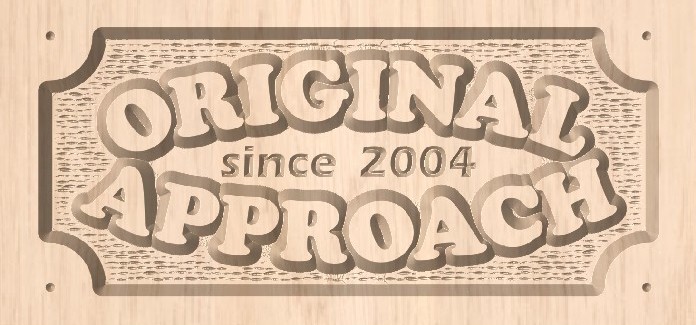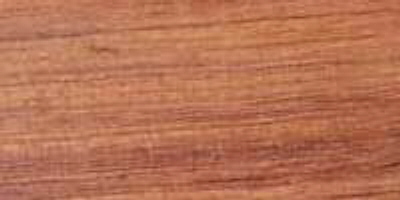|
BOTANICAL NAME: Guibourtia demeusei of the family Leguminosae. Other species
called bubinga include Guibourtia pellegriniana and Guibourtia tessmannii.
COMMON NAMES: African rosewood, Akume, kewasingo, Kevazingo (see comment at
bottom), Ebana, Essingang, Okweni, Ovang, Waka, Buvenga. The French call it Bois
de Roe d'Afrique.
The "African Rosewood" designation is fairly common, but to me this wood does
not really look like a rosewood at all, although it is similarly attractive in
its own right.
TYPE: not stated
COLOR: Varies greatly in coloration and grain patterns, but heartwood generally
is a medium red-brown with lighter red to purple veins and will naturally darken
with age. Sapwood is an unattractive dull grayish white.
GRAIN: Although it is frequently reported as having a "straight grain",
interlocking is also usually mentioned, and the interlocked grain has been more
in line with my experience. I've found it to be often attractively irregular and
"mottled" in grain patterns with fairly heavy interlocking.
TEXTURE: Many reports say its texture is moderately coarse to medium but even,
with fine pores are diffused throughout the wood, which often contain a reddish
gum. My experience has been more of a smooth surface and some reports agree with
this, saying "fine texture".
PROPERTIES / WORKABILITY: Works easily with hand or power tools despite being
very hard and dense. Turns and finishes very well and polishes well, resulting
in a highly lustrous surface, although this can take a little effort due to the
density. Reduced cutting angle recommended for interlocked grain, which can
cause tearout. Experts recommend a cutting angle of 15 degrees when planing.
Moderate blunting of cutters. Pre-drilling required for nailing. It's widely
reported that gluing can be difficult due to gum pockets, but I've never
encountered this myself and find that it glues very well.
DURABILITY: Moderately durable. Susceptible to attack by common furniture
beetle. Heartwood is resistent to preservative treatment. Sapwood is permeable.
FINISH: Takes a high natural gloss due to the density, but because of that
density, getting to the high polish can take a little work. Well sanded and
finished, this is a strikingly attractive wood and I've used it very
successfully for numerous small gift and decorative projects. It reportedly
takes stains very well, but anyone who stains this wood should be shot.
STABILITY: very stable
BENDING: Low steam bending characteristics
ODOR: It is said to have a bad odor when it is first cut, but this fades when
the material is dried.
SOURCES: found growing mostly in the Cameroons, Gabon and the Ivory Coast of
Africa. Specifically mentioned: Zaire, Equatorial Guinea, Congo, Liberia and
Nigeria.
USES: fine furniture, tool handles, figured veneer, flooring, cabinetwork and
panelling (mostly the veneer), knife handles, and fancy goods (jewlery).
TREE: These trees are usually found near rivers and lakebeds as well as swampy
areas or forests that are frequently flooded. This is a large tree that can grow
up to 150 feet with a diameter of up to 6 feet. Sometimes Bubinga trees will
have buttresses but almost always with straight boles.
WEIGHT: a very heavy wood, with weight varying from about 50lbs to 60lbs per
cubic foot
DRYING: Dries easily with little degradation, although it will sometimes exude
gum which can cause problems in working the wood. Experts recommend seasoning
the wood slowly to avoid distortion or checking using kiln schedule T2-C2 for
4/4 stock and T2-C1 for 8/4 stock.
AVAILABILITY: readily available, even in wide sizes. Specialty outlets can get
you boards 4 feet wide and more.
COST: reasonable to moderate. Expect to pay about $10/BF for good quality,
although figured pieces will cost more. Very wide boards are readily available.
COMMENTS: Logs where the grain is slightly irregular are usually rotary cut into
veneers by peeling, which produces a wild, swirling, veined figure that is quite
unique and very attractive. This veneer does not look at all like the veneer
yielded by any other cutting method on this species (or any other species for
that matter!). When cut this way, this species is referred to as Kevazingo. This
cut is widely used and highly prized for its beauty and character.
|




